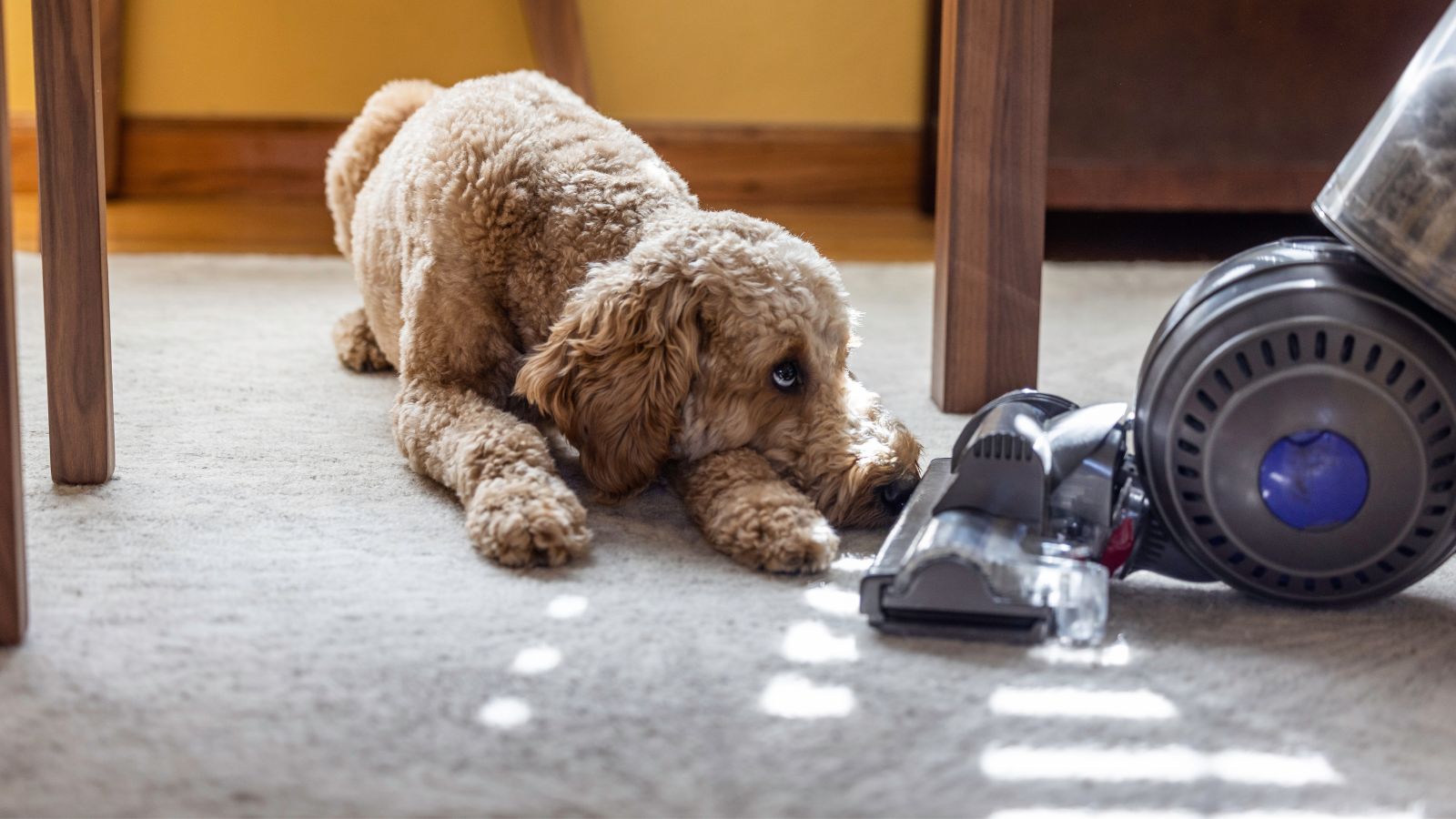4 signs you have a flea infestation – and expert advice you shouldn't ignore
Suspect your home has been infested with fleas? These are the clues to look for – and why tackling them immediately is a must


You don't have to have pets to find your home has a flea infestation, but it is most likely that any you spot hopping about have been brought in by an animal, most likely a cat or dog.
As soon as you see the signs, you'll need to find out how to get rid of fleas – and fast, because they can multiply quickly.
We spoke to pest experts to learn the most typical signs of a flea invasion and what to do next.
How do you tell if you have a flea infestation?
Experts say you don't need to see all the signs of fleas to have a problem, but this is how to be sure that any that have found their way into your home haven't taken up residence on your pets, carpets, upholstery, curtains, or even between floorboards.
1. Flea bites on you
Itchy, red-haloed flea bites around your ankles are often the first sign you'll notice because they're hard to ignore.
Fleas see animals and your furniture as hosts and won't live on humans, but they may bite (or feed on) us by mistake. Generally speaking, flea bites are not too serious; nevertheless, flea saliva can cause allergic responses in both you and your dogs, which can result in symptoms like extreme itching, redness, swelling, or even skin infections.
You may dismiss the odd bite as a mosquito bite picked up outdoors, but if you are bitten multiple times around the feet and lower legs, it's likely you've been bitten by a flea or fleas. That being said, it is worth noting that bed bugs frequently target this area thus it is not always a guarantee of flea infestation.
Design expertise in your inbox – from inspiring decorating ideas and beautiful celebrity homes to practical gardening advice and shopping round-ups.
2. A scratchy pet
Pets can become infested by fleas when out and about or when mixing with other animals that are themselves infested.
You may spot a flea or two, usually little black dots on your pet's belly. Still, it's likely you'll notice them scratching more than usual, grooming excessively, licking and biting themselves, and perhaps even developing bald patches or scabs. Fleas tend to target the head and neck regions of cats, whereas dogs are more vulnerable to flea attacks in their rear parts.
'The result of fleas feasting on your pet's blood is anemia, which might appear as pale or white gums. Look for any paleness in your pet's gums; this might indicate a more significant flea infestation that has to be treated by a veterinarian right once,' says Brett Bennett, Director of Operations at PURCOR Pest Solutions.
There are various over-the-counter treatments you can buy in pet stores, from anti-flea shampoo or powder to flea collars to oral medications, but you have to be careful in combining them safely so as not to harm your pet.
It is always best to get professional advice from your veterinarian if you are unsure of the best course of action. What you can safely do – and should do as soon as possible, and likely repeatedly – is to treat your pet's bedding and any places your pet sleeps regularly by putting it on a hot wash. You can also use spray-on treatments on pet bedding and furniture: Adam's flea and tick spray and TropiClean natural flea and tick spray are both Amazon's top buys for this. Follow the manufacturer's instructions carefully, especially in keeping your pet away from treated bedding and ventilating the room well during treatments.
3. Fleas hopping across a room
Fleas are small (1-3 mm) and blackish-brown with flat, wingless bodies. They are easy to spot, particularly on light-colored carpets or upholstery, because they jump rather than fly or crawl.
'Seeing one flea on your socks isn't an infestation,' says Georgios Likopoulos, pest control expert at Fantastic Services. 'Most likely, they got on your clothes while you were outside. It doesn't take one flea to infest your house because it needs both females and males to reproduce and lay eggs. However, the presence of more than one flea indicates an infestation.'
Check your carpets and rugs for fleas, especially in areas where your pets spend a lot of time.
4. White eggs or caterpillars
Unbeknownst to you, hard-to-spot pupae, larvae, and eggs can readily reside in your house or yard. Adult fleas will lay their tiny white eggs on your pet and these are likely to drop or be transferred onto the floor or furnishings, clean or not. Eggs laid by fleas can get stuck in carpet fibers, and it's easy for fleas to hide and reproduce on upholstered furniture, between cushions, and in crevices.
Flea eggs are hard to see, but the larvae, which look like white, small caterpillars, are a little easier to spot, especially around the areas where your pets hang out. If you suspect your home has been infested by fleas, it is important to spray-treat your upholstery and drapes using carpet powder, such as Amazon's highly-rated Petarmor carpet powder. Then, vacuum thoroughly (emptying the canister outside). Hot-washing or steam cleaning anything you can will help kill larvae, too. You will likely need to do this many times to ensure you have cleared the flea infestation.
FAQs
When are flea infestations most likely?
Fleas like humid conditions, so any infestation is likely to be worse in warmer weather than in winter. However, that doesn't mean there are no fleas in your home in winter because fleas will thrive in a heated home, happily nesting in drapes, carpets, upholstery, and, of course, on your pet.
Can I prevent a flea infestation?
Indoors, keeping a keen eye out for signs of fleas around where your pet sleeps will help you prevent an invasion from getting out of hand. Does a pest infestation mean you have a dirty home? No, but if you have a pet, you vacuum regularly – investing in the best pet vacuum you can afford will give you the best results. Always empty the canister or bag outside - you don't want the fleas finding their way back in. Then, use flea spray to treat your home regularly.
Outdoors, keep your lawn short, and discourage your dog from foraging into areas with tall grass or weeds.
Can you get fleas in your house if you don't have pets?
'You don't have to own a pet to get fleas. It's possible to go for a walk one day and unknowingly bring fleas home because they took a ride on your clothes,' explains Georgios Likopoulos, pest control expert. 'You can find them just about anywhere in the environment, especially where animals live or pets are walked. Fleas can also live on squirrels, rats, and mice. As we all know, rodents can live in parks, roam the streets, and invade our homes.'
The key to ridding your home of a flea infestation is to keep your eyes open for the signs and act quickly. Ignoring a single flea is a pest control mistake you won't want to repeat. If you do have a pet, contact other owners whose pets your pet has had contact with and with anyone whose house your pet has visited, as it's likely they will need to look out for a flea infestation in their homes, too.

Lola Houlton is a news writer for Homes & Gardens. She has been writing content for Future PLC for the past six years, in particular Homes & Gardens, Real Homes and GardeningEtc. She writes on a broad range of subjects, including practical household advice, recipe articles, and product reviews, working closely with experts in their fields to cover everything from heating to home organization through to house plants. Lola is a graduate, who completed her degree in Psychology at the University of Sussex. She has also spent some time working at the BBC.